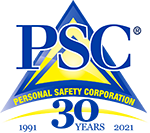Falls and resulting injuries are one of the most common adverse patient events in the VHA and the consequences can be devastating, especially with patients who are elderly.
The Problem of Falls and Injurious Falls
Falls represent a major public health problem around the world. In the hospital setting, falls continue to be the top adverse event. Injurious falls are ‘never events’ that are not only associated with significant morbidity/mortality. Some 3-20 percent of inpatients fall at least once during their hospitalization. In acute and rehabilitation hospitals, injurious falls ranged from 30-51 percent. Of these injuries, 1-3 percent result in fracture. Falls and severity of injury significantly increase total healthcare costs. Wu et al (2010) compared healthcare costs for fallers’ and non-fallers’ total healthcare costs from 1996 and adjusted those cost to 2010 dollars. The costs were not the costs immediately after a fall, but rather total healthcare costs (regardless of what the healthcare was for) for fallers and non-fallers over a 12-month period. Adjusted to 2010 dollars, one fall without serious injury costs an additional $3,500 annually, while patients with equal to or greater than two falls without serious injury have increased annual costs of $16,500. Falls with serious injury are the costliest with additional annual costs of $27,000. People who fall incur additional costs compared to those who do not fall. Many interventions to prevent falls and fall-related injuries have been tested, but require multidisciplinary support for program adoption and reliable implementation for specific at-risk and vulnerable subpopulations, such as the frail elderly and those at risk for injury.
The Joint Commission
The Joint Commission (TJC) (2013) requires accredited hospitals to conduct fall risk assessments for hospitalized patients to identify each patient’s risk for falls so that prevention measures can be implemented into the plan of care. Since it began to monitor sentinel events in 1995 through the end of 2012, the TJC has had 659 fall-related events, which resulted in death or permanent loss of function, voluntarily reported as a sentinel event. This number reflects voluntary reporting and represents only a small portion of actual events. The actual number is unknown but most likely much greater, attesting to the importance of fall prevention interventions. What is clear is that patients are still falling in hospitals and experiencing injury.
Falls are often the result of inter-related contributing factors, rather than a single cause, and results of interactions between the patient and the environment. However, falls do occur because of an immediate (or root) cause that can be understood and addressed through post fall assessment. While many falls go unreported, efforts are in place to report falls so that patients, family and interdisciplinary team members can assess the fall event, intervene on modifiable fall risk factors, and help patients and families/caregivers compensate for fall risk factors that are not modifiable.
Recognizing that not all falls are preventable, proactive programs are in place across the continuum of care to protect our veterans from injuries should a fall occur, and reduce preventable falls.
Understanding Falls
There are many risk factors for falls, which can be grouped into two categories – intrinsic and extrinsic factors. Intrinsic risk factors are related to the person’s condition, such as physical characteristics and medical diagnoses, (See table below) extrinsic risk factors are external to the person, such as hazards in the physical environment or medications given to them, (See table below). Additionally, these risk factors can be either anticipated or unanticipated. The anticipated risk factors are the ones known by the clinician and can be proactively addressed before a patient falls.
Defining Fall and Fall-Related Major Injury
VHA defines a fall as a loss of upright position that results in landing on the floor, ground, or an object or furniture, or a sudden, uncontrolled, unintentional, non-purposeful, downward displacement of the body to the floor/ground or hitting another object like a chair or stairs; excluding falls resulting from violent blows or other purposeful actions.
VHA defines a major injury related to a fall as any fall that sustains a fracture and/or trauma requiring emergency treatment; head trauma which includes patient’s head striking a surface or object and may include or result in any of the following: subdural hematoma, concussion, TBI or behavioral changes. The major injury definition includes death—the patient died as a result of injuries sustained from the fall (not from physiologic events causing the fall).
Table: Examples of Intrinsic and Extrinsic Fall Risk Factor
Related to the Person’s Condition (Intrinsic)
Related to the Environment or External to the Person (Extrinsic)
Anticipated
-Recent history of falls (most significant risk factor)
-Incontinence, urinary frequency and urgency
-Cognitive/psychological status
-Mobility/balance/strength problems
-Dizziness/vertigo
-Postural hypotension
-Age (over 65 years old)
-Overall poor health status
-Environment (wet floor, floor glare, cluttered room, poor lighting, inadequate handrail support, monochromatic color schemes, loose cords or wires)
-Inappropriate or lack of footwear
-Low toilet seat
-Wheels on beds or chairs
-Restraints (including side rails in the up position)
-Unsafe equipment (unsteady IV poles)
-Broken equipment
-Beds left in high positions
Unanticipated
-Seizures
-Cardiac arrhythmias not previously recognized
-CVA or TIA
-Syncope
-“Drop attacks”
-Individual reactions to medications
Understanding and Reducing Risk
Prior to assessment, a screening process is needed to determine which patients require full assessment. Therefore, clinicians must differentiate between screening and assessment. Screening is the initial practice to determine if risk factors exist. If risk factors for falls are identified, a patient must then have an assessment that is multifactorial and interdisciplinary.
Comprehensive, multi-factorial fall risk assessment provides essential data needed for identification of risk factors. Risk factors are then differentiated as modifiable or non-modifiable fall risk factors. Modifiable fall risk factors will be aligned to appropriate interventions. For non-modifiable fall risk factors, patients and their caregivers should be educated about them so they can compensate for those risks. Determining risk for falls should include patient-specific risk factors and environmental risk factors, with the goal to mitigate or eliminate modifiable risk factors and help compensate for those that are not modifiable.
Falls that result in minor injury can have serious consequences for older adults, such as fear of falling or delayed onset complications from bleeding. Therefore, it is prudent to over-estimate risk rather than underestimate risk and implement programs to protect patient from injuries should a fall occur. Fall risk is different than injury risk, and interventions implemented must be specific to the identified risk factors.
Redesigning Practices
The materials in this toolkit will guide you in redesigning your fall and injury prevention program from one that is based on a score or level of risk to individualized care planning based on fall risk factors, population characteristics and settings of care.
Resources are provided to move practice into best practices approaches for reduction of preventable falls, protection from injurious falls, and patient engagement in fall prevention.


